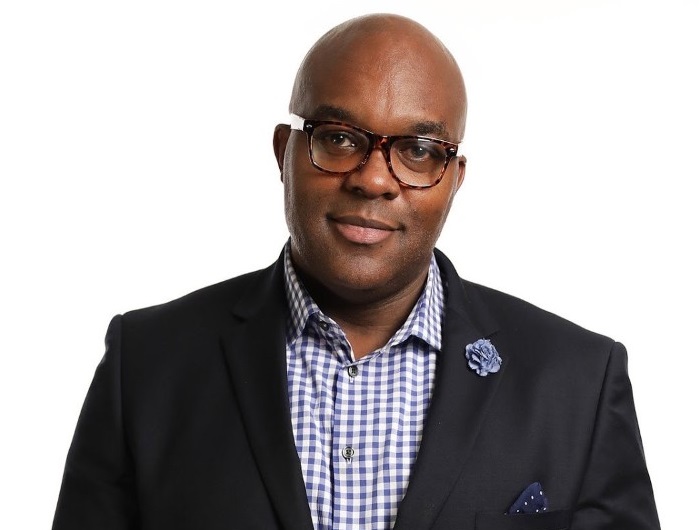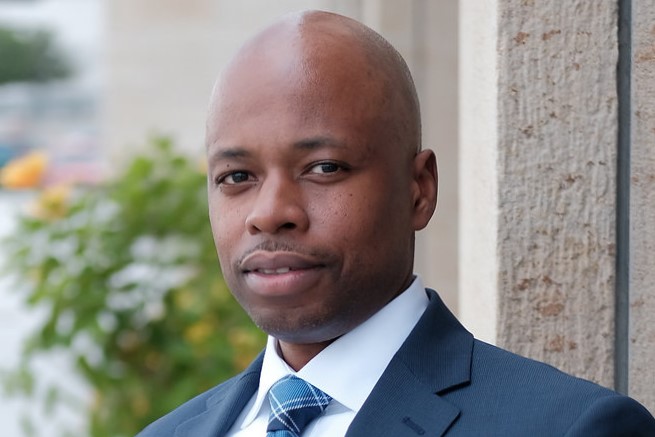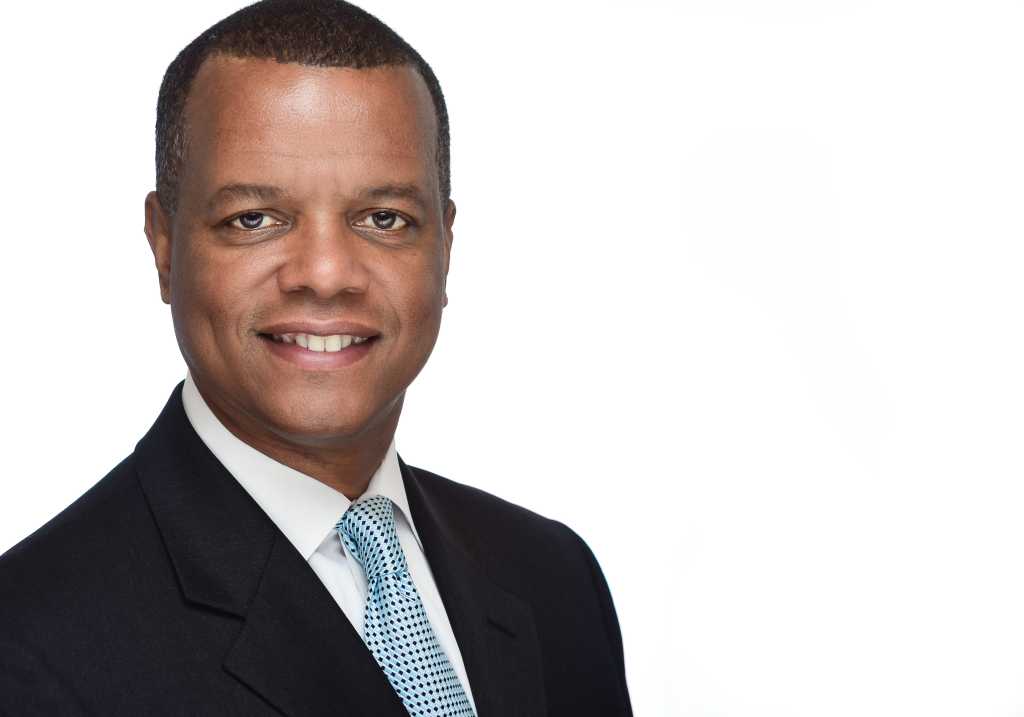Lawrence Anderson didn’t initially want a career in computers, despite an early passion for tech.
He performed well in computer science classes, was a Commodore 64 enthusiast, learned COBOL. But as he entered college in the late 1980s, Anderson saw limited job prospects. At that time, he says, it seemed like “you’d be a computer operator running transactions or a programmer. And there was nothing beyond that.”
Looking back, Anderson blames the profession’s bad marketing for creating his narrow perception of IT work. But he also blames his views on the realities of the era. As he points out, enterprise IT was just at its nascent stages. Indeed, the CIO role only came into existence in the mid-1980s.
So Anderson decided to study politics at college instead, earning a bachelor’s degree in the discipline from The Catholic University of America in 1991.
But the rise of the Internet and the emergence of IT as a business enabler lured Anderson into tech. “The job had changed,” he says.

Lawrence Anderson, CIO, Office of the Secretary, US Department of Commerce
US Department of Commerce
And so, after working briefly in two non-tech positions (where he still wound up doing some database administration and code creation), Anderson officially moved into IT. He’s been moving up the ranks ever since.
Now deputy CIO for shared services at the US Department of Commerce and CIO for the Office of the Secretary, Anderson reports to the department’s global CIO and says he wants to eventually move into the senior-most IT position, ultimately at a Fortune 500 company, seeing that as a way to have “a larger impact.”
Anderson has sought out roles throughout his career that he believes have readied him for that top-tier IT executive position. And he’s added a master’s degree in information systems management and a doctorate of management in information systems and technology, noting that a combination of technical expertise, management capabilities, and a grounding in business are critical for the work today. He says his background in politics helps, too.
“I feel like everything I’ve done so far has prepared me to be that 21st century CIO,” he says, adding that “an effective CIO [today] has to be the tech person but also a data person and strategic. The CIO has to align with the business and mature the organization to be ultra-competitive to hold off the disruptors that are coming their way. The CIO has to influence and be an evangelist for change. That’s what I’m looking to be. And I do think the CIO role as it is today is now a stepping stone to COO or CEO.”
Building business value
Anderson is representative in many ways of the IT leaders who are now moving into the highest ranks. They have retained that love of technology that the first wave of CIOs brought to their jobs, but up-and-coming CIOs differ from prior IT executives in several ways.
To start, they typically have more business acumen and experience than their earliest predecessors. They’re also more diverse. And their impending ascent to the top IT positions and, from there, to other C-suite roles promises to bring changes to the top of the org chart — considering that CIOs today are mostly white (82% according to figures from career website Zippia) with Blacks making up only 3% of the US CIO population.
Dane Bamburry, senior director of enterprise architecture at Cox Enterprises, has followed a path to the top of IT similar to Anderson’s.

Dane Bamburry, senior director of enterprise architecture, Cox Enterprises
Cox Enterprises
Like many senior technologists, he, too, discovered both a knack and passion for computers while in school. He had a Vtech Laser 128 (an early Apple-like computer) and spent time studying what made electronics — from his VCR to his Walkman — tick. “I was always fascinated by how they worked and how they made things faster, easier, different,” he says, echoing a sentiment frequently expressed by IT pros.
Bamburry studied at the University of Notre Dame, where he earned a bachelor’s of business administration in information systems management. “It’s business and tech but also how tech works with and supports business. That’s where I sunk my teeth into technology,” says Bamburry, who later earned an MBA.
Bamburry worked at a tech startup after college, where he put that business-focused tech training to work and gained real-world experience, noting that “the cool thing about working at a startup is you get to learn everything and you have to do everything with tech.”
He also liked being part of innovation at work. “I understood the business side, so I was solving problems not for the sake of technology but from the business angle,” he says.
As he became a team manager at the startup and then at other companies, Bamburry also realized that he liked to lead, deciding then to aim for CIO, seeing the position as one that brings together leadership, technology, business, and innovation. It’s that “ability to impact change at the highest level of the organization” that has him targeting the C-suite, he says.
“It’s all about enabling the rest of the organization to be successful,” Bamburry says, pointing out, for example, that he and his colleagues are now exploring the strategic value of blockchain and the metaverse at Cox. “The technology still fascinates me, but the key is how do you take that fascination and apply it to the business and enable the business.”
As he advances his career, Bamburry says he has been focused on building skills, such as exerting executive influence and communicating business value, as well as working with mentors and mentoring others.
Bringing a fresh perspective to the table
Shawana Gaines, another rising IT leader, is taking similar steps as she moves ahead.
Gaines, who is now head of regional and site services at HP, shares with many of her colleagues an early love of tech as well as how technology enables other activities.

Shawana Gaines, head of regional and site services, HP
HP
“That time was really the foundation of the computer era, and I wanted to be behind it,” she says of her early years. “I thought, ‘This is me, I can do something really big here.’”
Gaines, who has a bachelor’s in computer science and business management as well as an executive MBA, has been building her IT career for the past two decades. She notes that she gets a sense of fulfilment by “bringing something to the table and helping the company advance.”
That’s a big part of what’s driving her forward, as she sees a C-suite role — whether it’s the CIO, chief experience officer, or another post — as one that will let her leverage her expertise in customer and employee experience, technology, and business to deliver value.
“I do see myself at that seat, whatever the title may be,” she explains. “And I’m driven to it because I’ve watched extraordinary leaders and the seeds they’re planting, and I know I can play it forward and expand on what they’re doing.”
Gaines’ early passion for technology and a long-term curiosity about how things work mirror the traits of many early-generation IT executives. But Gaines and others in this current cohort of rising IT execs are often even more passionate about using technology to create new opportunities for their organizations. As such, they say they see their experience and skills leading them not only toward the CIO role but other C-suite positions as well.
Vincent Shorter, vice president of IT at Conagra Brands, actually started college as a computer science major but moved to the business program. “I was thinking about how do I get a job,” he says. He earned a BS in business administration from California State University at Dominguez Hills as an ROTC student before entering the Army on active duty.

Vincent Shorter, vice president of IT, Conagra Brands
Conagra Brands
Shorter started his IT career as a soldier. He was ordered to create an electronic system to track 1.4 million personnel records that had previously been managed manually. He realized then, he says, that he “loved the idea of technology solving business problems.”
Shorter chose IT as his specialization while in the Army, which he served for nearly 11 years before leaving in 2006 as a lieutenant colonel and chief information technology officer.
He also saw, as he moved up in rank, that he enjoyed “leading teams toward a common mission.”
Shorter says those realizations helped him focus his civilian career, as he has continued to advance up the corporate ladder and build his academic credentials, adding an MBA as well as certificates to his resume.
“What I sought out is having a role that brings business and IT together,” he explains. “That has given me the opportunity to do something I really enjoy — learning about new technology — but it has also given me a purposeful dynamic: How do I help whatever organization I’m serving and make it better; how do I contribute by leveraging technology.”
Shorter and the others also bringing more diversity to the senior ranks of the IT profession, which continues to have an underrepresentation of Blacks. Research from Zippia, for example, found that only 4.6% of all computer programmers are Black/African-American. In contrast, figures from the US Census Bureau show that 14.2% of the total population identify as Black or African-American.
These senior leaders say they recognize that as they move up to the C-suite they are creating more diversity at the top and increasing representation at the highest levels of their organizations. And, they say, they’re bringing with them a desire to accelerate further diversity within the profession as they seek to bring other transformative ideas to their roles. Indeed, there’s a consensus that the two go hand in hand.
“I’ve always thought diversity, including diversity of thought, generates lots of solutions and solves more problems,” Bamburry says. “And if you look at it from that perspective, you’re going to be driven to hire a diverse team. So I feel an obligation to hire a diverse team because I’m also going to get a better ROI. It yields business value.”
Read More from This Article: Black CIO hopefuls look to level up
Source: News

